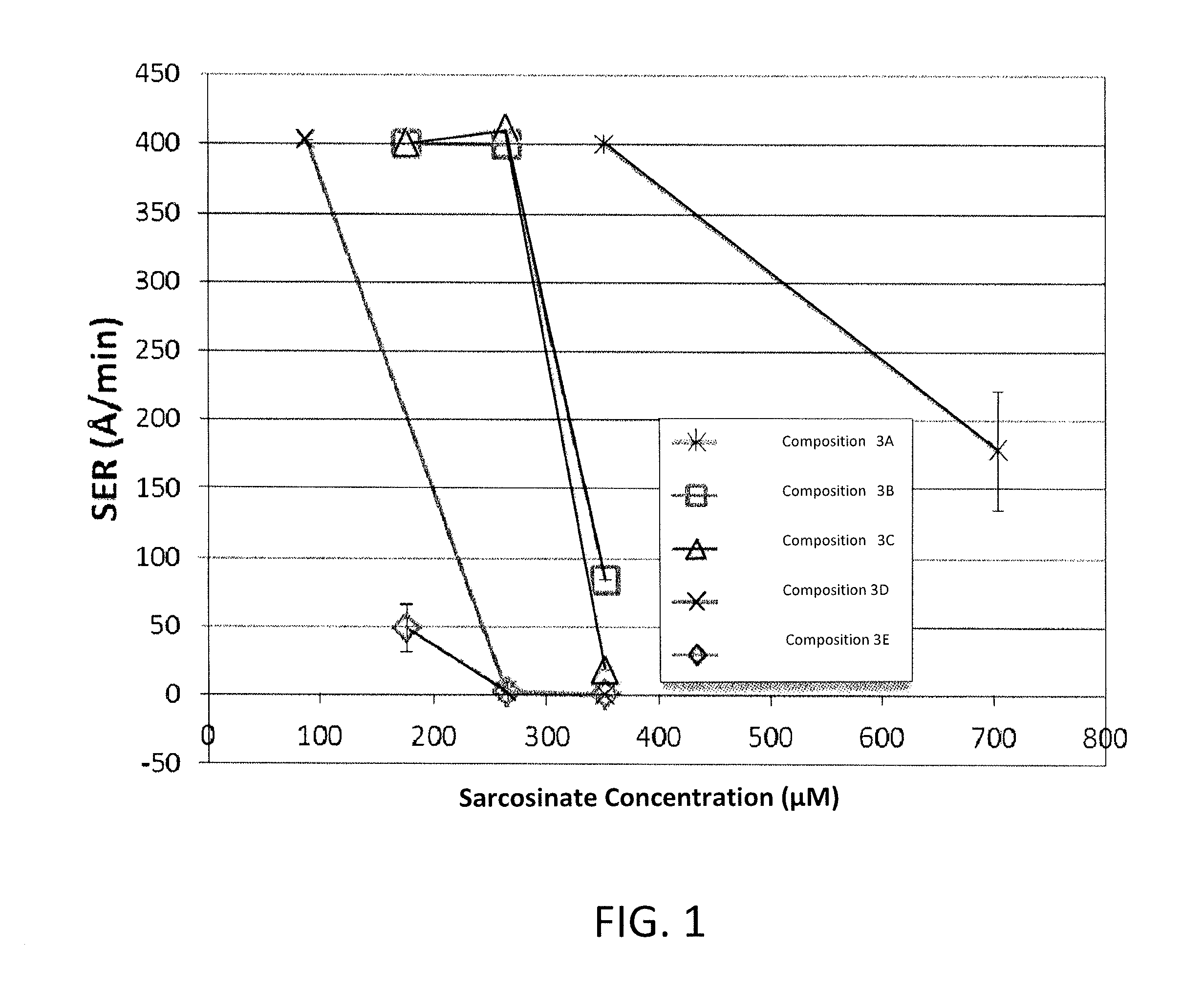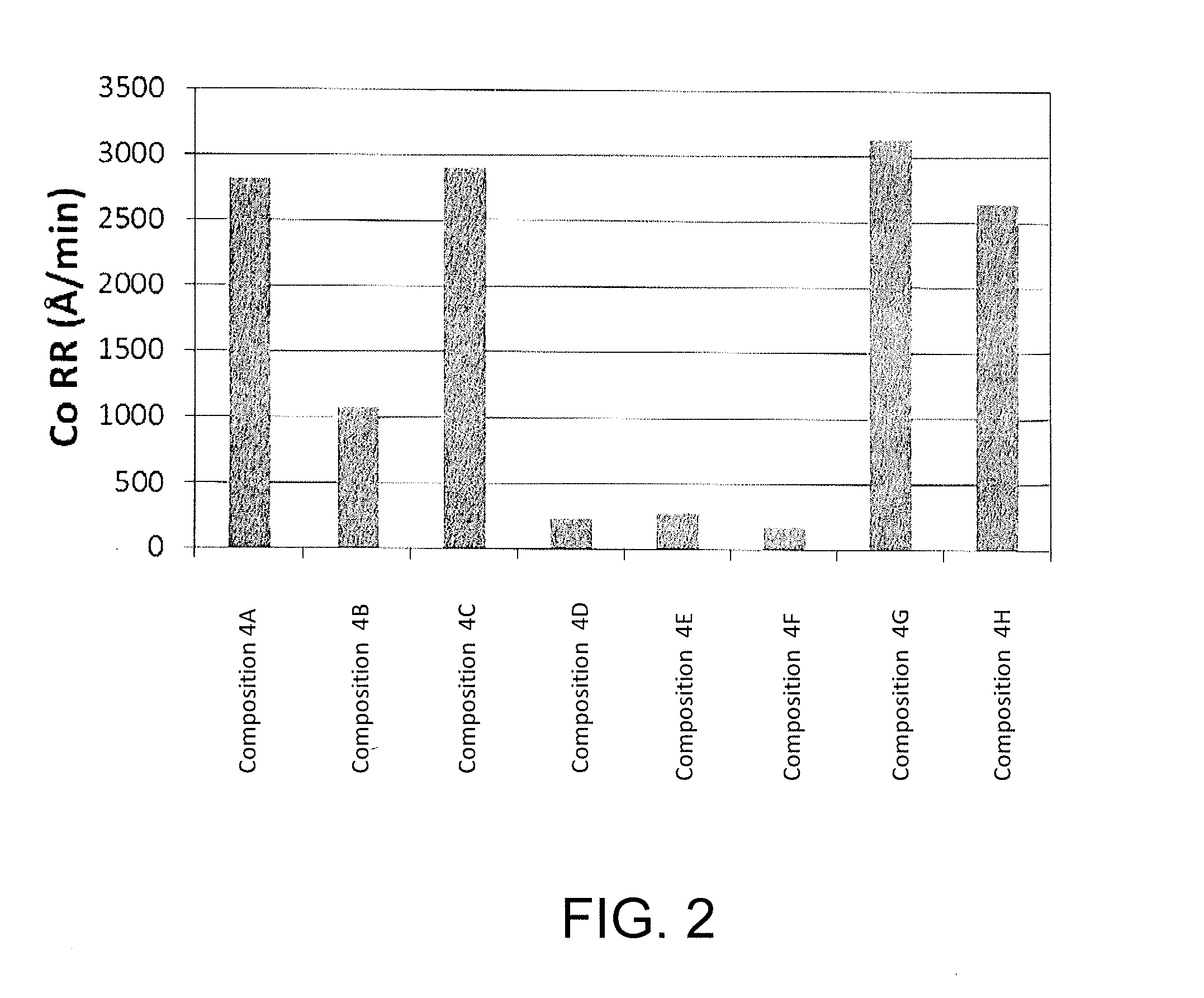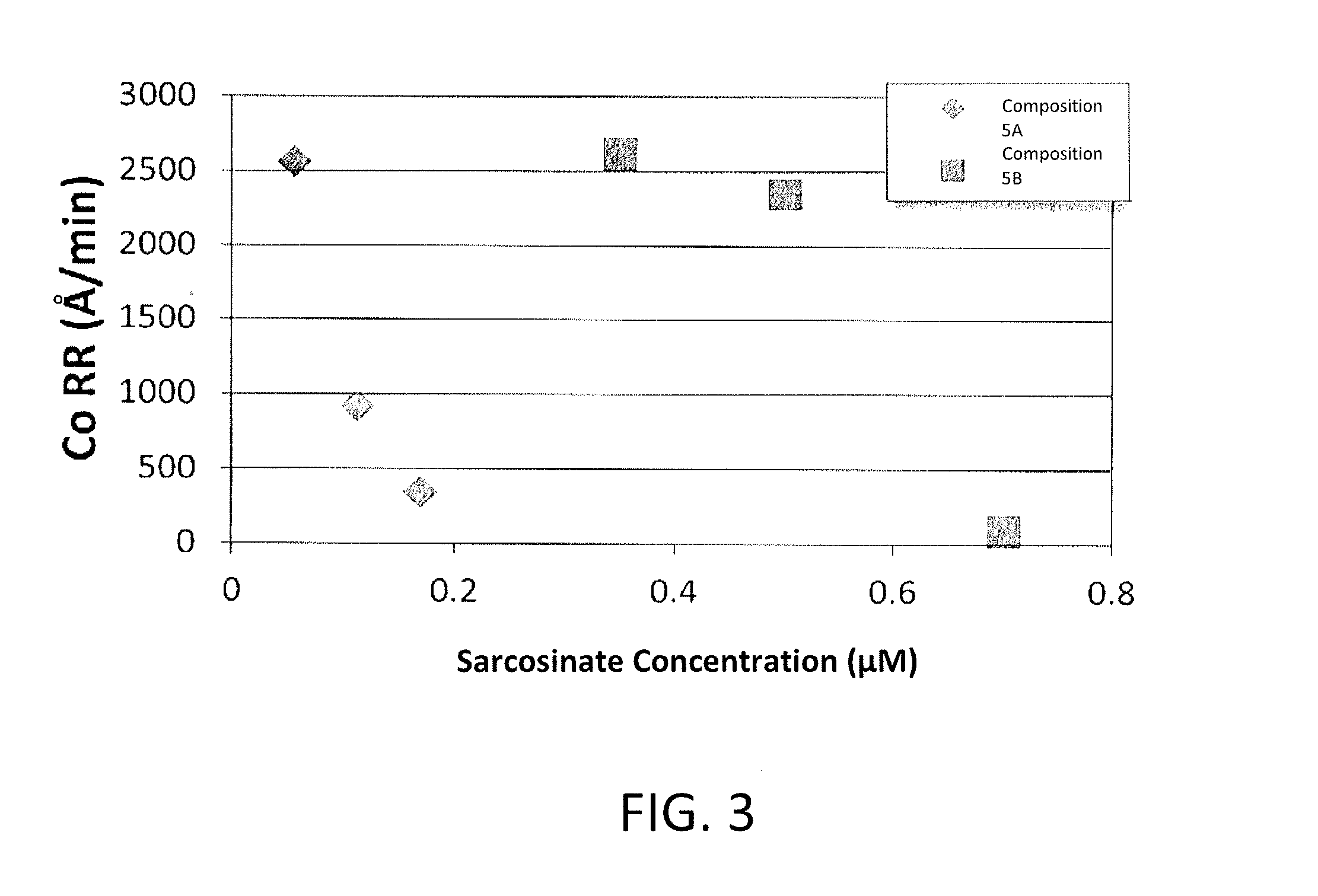Corrosion inhibitors and related compositions and methods
a technology of corrosion inhibitors and compositions, applied in the field of corrosion inhibitors, can solve the problems of deterioration of manufactured products, difficulty in corrosion of metals in the presence of water, and the inability to use certain products, and achieve the effect of inhibiting corrosion of a substrate containing metals
- Summary
- Abstract
- Description
- Claims
- Application Information
AI Technical Summary
Benefits of technology
Problems solved by technology
Method used
Image
Examples
example 1
[0077]This example demonstrates corrosion inhibitor efficacy for inhibitor compositions under aggressive environmental conditions. In particular, static etch rates (SER) of cobalt (Co) substrates were measured after being exposed to various inhibitor solutions across a range of pH's, in comparison to a control solution that was absent an inhibitor. Static etching is a technique that demonstrates the magnitude of cobalt dissolution in water at the tested pH level, and high values are undesirable. Potassium sulfate (K2SO4) was also included in the solutions where additional corrosivity was needed, i.e., at pH above 3, to provide the desired aggressive environmental conditions.
[0078]Cobalt wafers prepared by physical vapor deposition (PVD) having a thickness of 2000 Å were obtained from Silyb Wafer Services, Inc., Gig Harbor, Wash., with a deposition scheme of cobalt on titanium (Ti) on silicon dioxide (SiO2) on silicon. The cobalt wafers were sectioned into 2 cm by 2 cm squares.
[0079]...
example 2
[0089]This example demonstrates corrosion inhibitor efficacy for inhibitor compositions under environmental conditions that were less aggressive than the conditions of Example 1. In particular, SER experiments were conducted as set forth in Example 1, except that potassium sulfate salt was not included in any of the solutions.
[0090]Table 4 sets forth the SER for selected inhibitor solutions under similar test procedures and conditions as previously described in Example 1, but without the added potassium sulfate (K2SO4) salt.
TABLE 4Average SER (Å / min)InhibitorpH 3pH 5pH 7pH 9N-lauroyl sarcosinateNT 613 NTtetradecylphosphonic acidISIS1NTsodium olefin sulfonateNT 375NTdodecanoic AcidISIS1NTN-benzoyl glycineNT165NTNThexadecyltrimethylammoniumNTNTNT6bromidenone (control)NT223193 5
[0091]These results demonstrate that surfactants that had previously been ineffective as corrosion inhibitors under the aggressive conditions of Example 1 were effective under different, less aggressive, conditi...
example 3
[0093]This example demonstrates the role of dose dependence on corrosion inhibitor efficacy for various sarcosinate inhibitor compositions under aggressive conditions.
[0094]In particular, SER experiments were performed by exposing a small piece of PVD cobalt wafer as described in Example 1 to an inhibitor composition at 35° C. for 5 minutes. The inhibitor composition was in the form of a solution at a pH of 7 and included 40 mM L-histidine, 10 mM potassium sulfate, and one of five different sarcosinate inhibitors, as identified in FIG. 1, which is a graph of static etch rate (SER) (Y-axis) versus inhibitor concentration (μM) of various sarcosinate compounds (X-axis). The SER was determined in A / min by comparing the thickness of the cobalt wafer before and after the SER test. Without any inhibitor under these conditions, the average SER was 414 Å / min as seen in Table 3.
[0095]With reference to FIG. 1, it will be understood that the compositions with the different sarcosinate inhibitor...
PUM
| Property | Measurement | Unit |
|---|---|---|
| temperatures | aaaaa | aaaaa |
| particle size | aaaaa | aaaaa |
| particle size | aaaaa | aaaaa |
Abstract
Description
Claims
Application Information
 Login to View More
Login to View More - R&D
- Intellectual Property
- Life Sciences
- Materials
- Tech Scout
- Unparalleled Data Quality
- Higher Quality Content
- 60% Fewer Hallucinations
Browse by: Latest US Patents, China's latest patents, Technical Efficacy Thesaurus, Application Domain, Technology Topic, Popular Technical Reports.
© 2025 PatSnap. All rights reserved.Legal|Privacy policy|Modern Slavery Act Transparency Statement|Sitemap|About US| Contact US: help@patsnap.com



